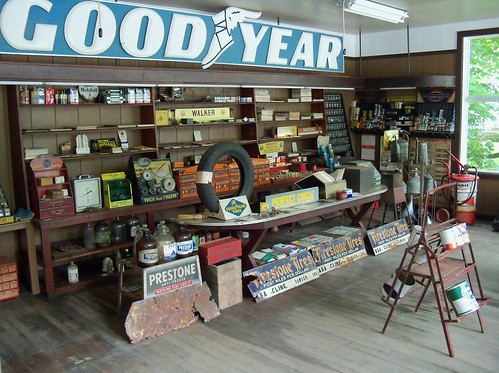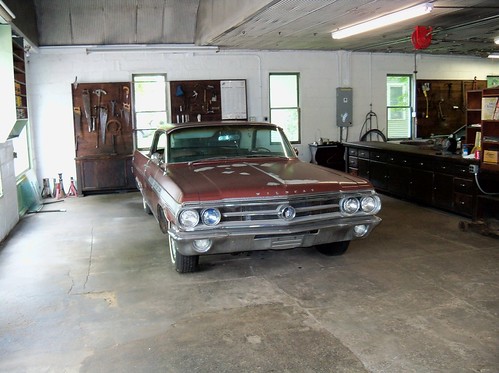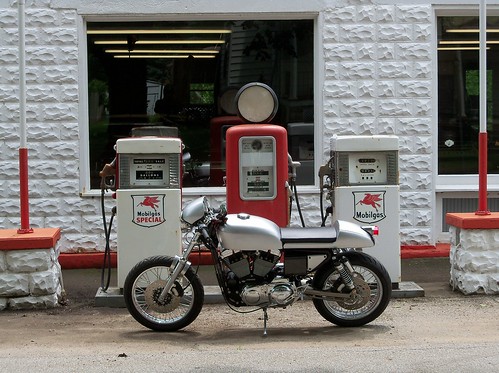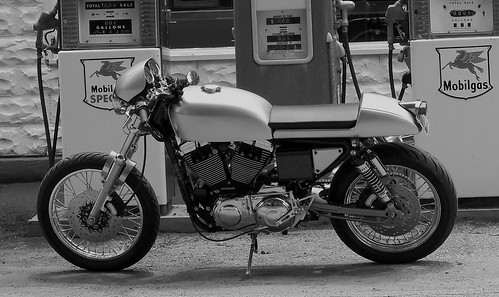Something I've been asked when out on my Sportster, and seen discussed on forums, is "I'd like to sport up/street tracker/cafe a Sportster. Which model is best?" I'll group them into three groups; Ironhead, Evo solid mount, and Evo rubber mount, and then some of the sub-models of the groups. It's going to be a very brief review, since just with the Ironheads alone, you are talking about 29 model years, so lots of changes and differences. Here is what I'd recommend, and most of this really applies whether it's a cafe', street tracker, or whatever. I'm leaving out the more collector models like the XLCR or XR1000, and also the aftermarket frames that are out there. I'm talking about your basic standard Sportster, using the stock frame. You'll see at least 100 bobbed or chopped Sportsters for every cafe' or tracker out there, so there is a lot of fun in taking the road less traveled, and it really is more in keeping with the original spirit of the XL. The first thing that comes to mind is, if you currently own a Sportster, whatever model it is, that is the best one. Kind of obvious I think, but really true in most cases. Any and all Sportsters are a blank canvas ready for whatever the owner wants to do. If you don't own one, there might be models better suited to reach your goals.
The first I'll look at is the Ironhead Sportster. Produced from 1957 to 1985, if you want vintage, and not just a "vintage look", this is it. It is the last classic Harley engine produced. Being a vintage bike, they will need more mechanical work and attention. If you don't like to turn wrenches, don't buy an Ironhead. If you do, they can be made to be reliable, and will reward you for it. They are the only Sportster to come from the factory with a kick starter on certain models. An Ironhead will always stand out in a sea of Evos. These are also the lightest Sportsters. Prices of course vary wildly, and ideally I'd look for a well taken care of stocker, owned by someone who knows Ironheads. There are fewer off-the-shelf parts available, so you'll have to make or adapt more things. It just means you'll end up with a more unique bike.
Here's a 1976 Ironhead with parts from
Benjie's.

My favorite of the Ironheads, I really like look of the '79-'81 which used the XLCR style frame. It's just perfect for a cafe' racer. While unloved by the faithful when it first came out, the triangle rear frame looks just right now.


'82 to '85 has the later Evo type rear frame section.

Now on to the solid mount Evolution Sportsters. They fall into two types, the earlier ('86-'90) 4 speeds and later ('91-'03) 5 speeds. I personally prefer the '91-'03 5 speeds. The 4 speed transmissions are a bit weaker, and some have problems with the alternator behind the clutch, but they are also lighter weight than the later 5 speeds. 2000-2003 models come with 4 piston brake calipers and sealed wheel bearings. If I was looking to buy right now, it would be a 2000-2003 XL1200S. The "S", or Sportster "Sport", has adjustable suspension, twin front brake rotors and dual plug heads ('98-'03), among a few differences. The Hugger has lowered suspension, but otherwise standard. The XL883R is one of the best looking models, and comes with twin rotors like the S. The C models have forward controls, 21" front wheel, and short rear shocks.
Here's a great example of what can be done with an Evo XL.

Here's my '03. It is a XL1200C, or "custom" model. While an S model would have been preferred for the direction I went with it, ultimately it didn't really matter. If you are wanting to do some mild mods, for example are wanting to use stocks mags and stock mid foot controls, avoid the C models. If you will be using rear sets and lacing different rims, it won't matter. One thing about the C model, most of the C specific parts can be sold or traded for the parts you want. For example, I sold my C model handlebar riser for more than I paid for my clip-ons.

The 2004 and up rubber mount Sportsters were meant to make the Sportster appeal to a larger group of riders. Designed to be a kinder and gentler Sportster, they also became heavier and more complicated. In rubber mounting the engine, the bikes gained 50 or so pounds. With the engine no longer acting as a structural member, the frame had to be beefed up. Since the engine now moved around in the frame, parts like the foot controls and exhaust needed more complicated mountings. The bikes gained in popularity with people who wouldn't have considered the solid mounts, but keep in mind that the extra weight hurts accelerating, stopping, and turning. It is a trade off welcomed by some, but a sacrifice made in order to solve a problem that didn't exist for others. Another downside to the '04 and up Sportsters is the elimination of the "cassette" or "trap door" transmission. The engine cases now need to be split for transmission repair, unlike previous models. Not having a conventional frame mounted swingarm pivot has given them a reputation as being more prone to wobble problems. Fuel injection came along in 2007. Great if you like it, more complexity for those that are fine with the single carb. The XL1200R would be the best starting point for a sporty rubber mount Sportster. Like the previous solid mount Sportsters, the main differences between models (C, N, R and so on) are bolt-on parts.
While overall the rubber mounts became less sporty, they also lay claim to what is likely the most sporty Sportster model, the XR1200, so don't count them out as having excellent potential.

As for any Evo model, should you get an 883 or 1200? I'd certainly recommend a 1200, but it isn't very costly to convert an 883. Often the price difference isn't that much between the two, so you'd be money ahead just buying a 1200. On the other hand, you could convert an 883 to 1200 or 1250 with better parts than a stock 1200, so it just depends.
I prefer the later 5 speed solid mount Evos, and feel they are the best of old and new. While I'd love an Ironhead, I also appreciate the ease of maintenance with the Evo. The rubber mount Sportsters might be the better choice for someone wanting to use the bike for long distances. It really comes down to how the bike will be used, and personal preferences.













